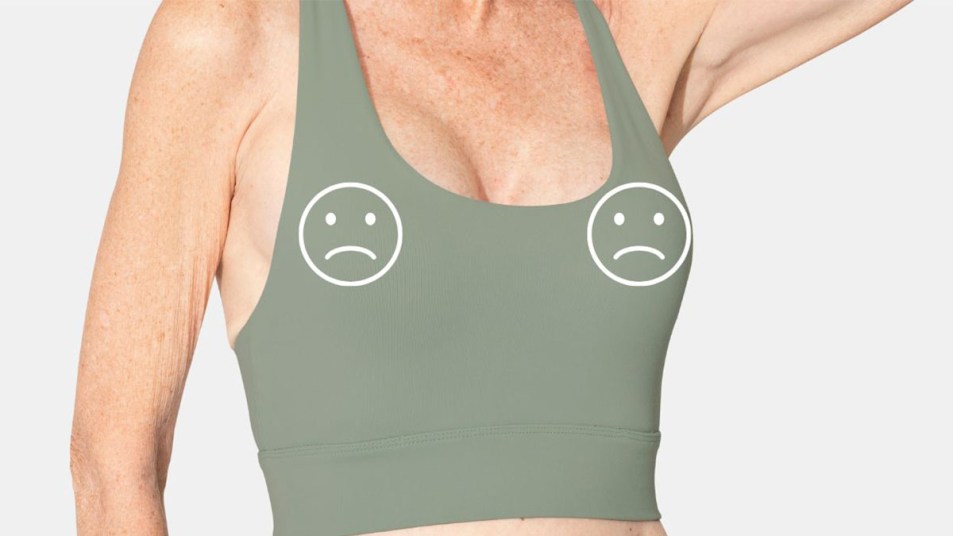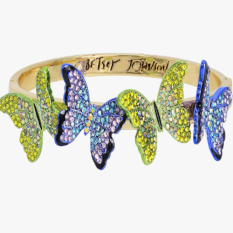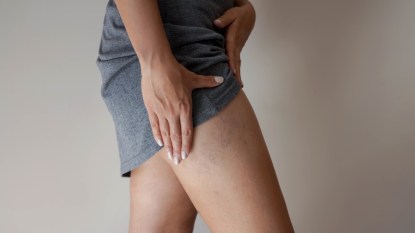When Your Nipples Make You Cry — MDs Break the Silence on Sad Nipple Syndrome
We asked doctors what causes this little-understood condition and what you can do about it

You expect your favorite a sad movie, or even a sappy TV commercial, to tug at your heart, briefly stirring pangs of melancholy, sadness or even loss. But what about when you put on your bra or wash your breasts in the shower? Turns out, for some women, any type of contact with their nipples can trigger random bouts of sadness, anxiety, loss or other negative emotions — a condition called sad nipple syndrome.
The Internet is teeming with stories of influencers and everyday women alike sharing stories of how even slightly grazing their nipples can spark instant feelings of despair. With little known about this mysterious condition, women are wondering why exactly this happens. What does it mean to have sad nipples? Read on for the scoop on sad nipple syndrome…and what to do if your breasts begin to throw your emotions out of whack.
What is sad nipple syndrome?
Sad nipple syndrome is an interesting, but only recently discussed, phenomenon. Those who suffer from the condition report experiencing brief but intense bouts of unhappiness, dread, sadness and even homesickness for a brief time when their nipples are touched, explains Sergio Alvarez, MD, CEO and medical director of Mia Aesthetics in Miami.
The onslaught of negative emotions typically retreat as quickly as they appear, in a minute or two after any type of nipple stimulation, adds ob/gyn Michael Green, MD, Co-Founder at Winona Anti-Aging Wellness Center.
What causes sad nipple syndrome?
There are dozens of anecdotal theories floating around the web, but experts have yet to unpack any definitive cause of sad nipple syndrome. Adds Dr. Alvarez, “due to the lack of medical research relating to sad nipple syndrome, doctors can only speculate as to its cause.”
The current thinking is that sad nipple syndrome is related to a similar occurrence experienced by nursing mothers known as dysphoric milk ejection reflex (D-MER). This condition causes women to experience a wave of emotional letdown and other negative emotions about 30 to 90 seconds before their milk is released when breastfeeding or pumping.
This theory is one Dr. Alvarez says was first proposed by Barry Komisaruk, a behavioral neuroscientist at Rutgers University, who hypothesizes that women experience D-MER during breastfeeding because the activity typically requires mammals of all types to be somewhat stationary. “Young animals can’t nurse well if their mother is walking or running about, and so the activity of nursing requires the mother to be somewhat calm and still,” Dr. Alvarez explains.
To achieve this calmness, Dr. Alvarez adds that a mother’s brain automatically dials back the activity of the sympathetic nervous system—which regulates your ‘fight or flight’ response—so the parasympathetic nervous system (which controls the ‘rest and digest’ response) can be in control to enable breastfeeding. (Click through for more on how these two halves of your nervous system work and how to optimize nervous system regulation.)
This lightning-fast chain of events, triggered by nipple stimulation, also includes a brief reduction of the stress hormone adrenaline and a boost in the feel-good hormones oxytocin and dopamine, required to slow the body while nursing. “Although this all happens so fast, some women may perceive the rather rapid but temporary changes in stimulating brain chemicals as a momentary period of negative emotions,” explains Dr. Alvarez.
Can I have sad nipple syndrome if I’ve never breastfed?
Absolutely, says Dr. Alvarez, who notes that for some reason this natural response, which typically only occurs when women are nursing, occasionally goes into overdrive in some women who aren’t lactating, causing them to experience a similar reaction to nipple stimulation as women with D-MER.
See two women share their experiences with sad nipple syndrome:
Is there a cure for sad nipple syndrome?
Because there is very little research about D-MER, and even less about sad nipple syndrome, there is no current treatment protocol for either condition says Dr. Green. But that doesn’t mean you’re doomed to live with a constant barrage of the blues — and other negative feelings — caused by sad nipple syndrome.
“Wearing padded bras and soft materials can help to avoid unintentional stimulation of the nipples and bouts of sadness as you go about your day,” says Dr. Alvarez.
And simple stress-relieving, soothing strategies like the ones below can also help improve a gloomy, or agitated mood caused by sad nipple syndrome.
To ease the sadness in the moment
Even one short mindfulness meditation session, during which you focus on breathing and awareness of your thoughts, holds promise for improving your mood and reducing anxiety, including that caused by sad nipple syndrome, according to research presented at the 2018 Experimental Biology meeting.
While getting dressed, or engaging in other acts that might stir anxiety caused by sad nipple syndrome, try this free, short mindful breathing exercise from Every Mind Matters:
To keep the sadness at bay longer term
Magnesium helps keep your mood balanced by regulating your body’s stress response, according to several studies. Take advantage of magnesium’s mood-boosting power to overcome sad nipple syndrome by snacking on ¼ cup pumpkin seeds, which contain 162 mg of magnesium, or adding 3 tablespoons of flaxseed to yogurt for 120 mg of the mood-boosting nutrient. the National Institutes of Health recommends that women get 320 mg of magnesium a day. (Click through to explore the new world of magnesium that sprays on and absorbs through the skin.)
For more articles about strange nipple-related symptoms, click through the links below!
Jogger’s Nipple Is a Real Condition — Here’s How to Cure It
Are Your Menopausal Nipple Changes Normal? Here’s What an Ob/Gyn Wants You To Know
Expert Advice: When Is Green Discharge From Breasts a Cause for Concern?













